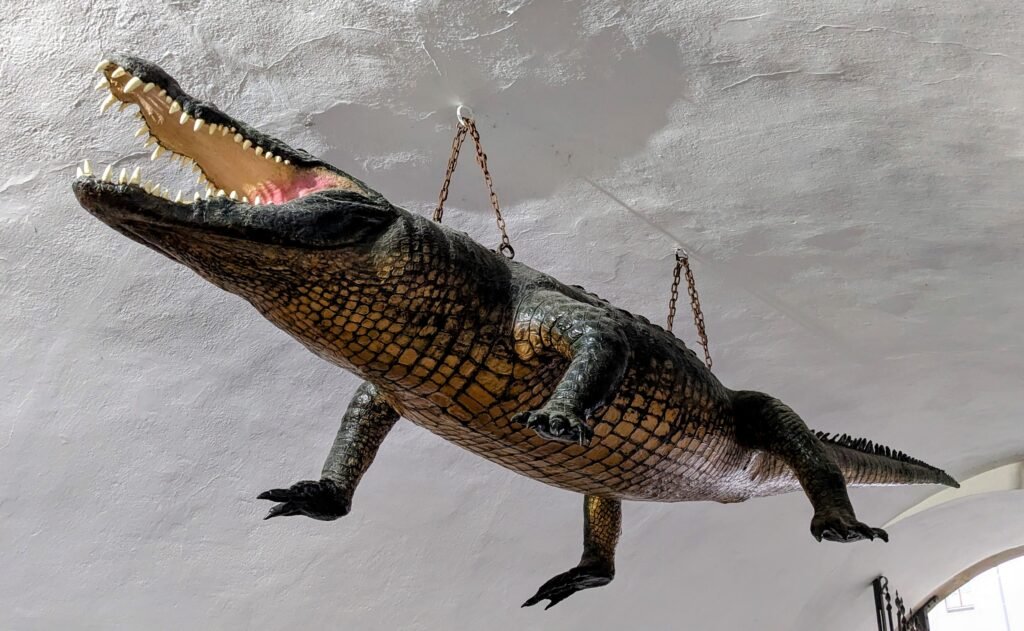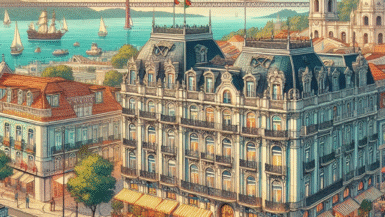Recently, from my home base in Vienna, I boarded a train to Brno, Czechia (the Czechs want you to call it Czechia now, not the Czech Republic). Before arriving I knew nothing about it, other than it was Czechia’s second largest city after Prague, and that it was fast developing a reputation as a foodie’s paradise. That was all I needed to know, so boldly venturing where no Tortoise has ventured before, I wandered, foraged, and slept in Brno to set about answering the question on everyone’s lips ‘is Brno is worth visiting?’
A city of around 400,000, Brno’s demographic is young, with several leading central European universities based here. I often find that places with similarly young populations rarely get boring, as they’re constantly reinventing themselves. But, can the same be said for Brno, and what is it like to visit?
Welcome to my travel guide to Brno Czechia, where I’m giving my usual takes on getting there, what I did and saw, accommodation options, and whether or not the city’s emerging reputation for great cuisine is justified or not. So grab yourself a Pilsner and let’s get stuck in…
VISITING BRNO CZECH REPUBLIC
A (very) brief history
Despite flying under the radar compared with its glamorous older sibling, Prague, Brno has been witness to several important historical events over time, which have shaped the city into what it is today. The city dates back to the 11th century, and due to its proximity to Vienna, fell under Habsburg rule for centuries. To this day much of its architecture carries this legacy.

Arguably, the city’s proudest moment came when withstanding the Swedish siege of Brno in 1645 during the 30 years war. Later in 1805, the nearby Battle of Austerlitz cemented Napoleon’s dominance in Central Europe, while during World War II the city was occupied by Nazi Germany, had its Jewish population deported and its Jewish quarter destroyed.
Post 1945, Brno saw the expulsion of its sizeable German speaking population and it became part of Communist Czechoslovakia. Following the 1989 Velvet Revolution, the city then transitioned to a market economy, growing into a hub for education, technology, and Moravian culture. Today, it’s renowned for its academic and innovation sectors, as such, there are several multi-national companies headquartered in the city, and a pretty healthy ex-pat population too.
First impressions
The city center of Brno (i.e. the part of town which was once encircled by the city walls), is pretty compact, walkable, and has a very relaxed and quiet vibe. Aesthetically, the city is easy on the eye, with several old world alleyways, nooks and crannies that you can get lost and found in easily. There are modern shops which cater to local residents, but these blend seamlessly with the old town’s well kept architectural style, which is predominantly baroque, due centuries of Habsburg rule.
I’d be lying if I said that Brno has a huge number of things to do and see, but it is certainly worth visiting for one or two nights to soak up its calm, but buzzing vibe. I took a private walking tour to learn more about the city, and I found a couple of lovely green spaces to explore too. I particularly enjoyed the food, while the quality and range of accommodation options, and the ease of reaching the city were also big plus points.

From June 19th – 29th Heymondo are offering a 15% discount for all TTT readers on their travel insurance plans! So if you’re planning ANY trip this year, now’s the time to get covered!
GETTING THERE
Trains from nearby cities
Being the second largest city in Czechia, Brno is naturally a key transport hub, with excellent domestic and international train connections. Here’s a breakdown of the most common routes to and from Brno:
-
Prague to Brno
-
Vienna to Brno
-
Bratislava to Brno
-
From Ostrava to Brno
Duration: 2.5 to 3 hours
Trains run frequently throughout the day, departing from Prague Main Station (Hlavní nádraží) and arriving at Brno Main Station (Hlavní nádraží), which is located in the city center, just outside the old city walls.
Book tickets in English with Omio. Alternatively, you can book a bus ticket with Flixbus – bus journeys take around 2hrs 25 mins, a little less than the trains.
Duration: 1 hr 26 minutes
Trains depart from Wien Hauptbahnhof (Vienna Central Station) to Brno multiple times daily. Most trains are direct, but some require a change in Breclav, although this doesn’t impact the overall journey, which remains the same (1 hr 26 mins).
Book with Omio, or direct with either OBB (the Austrian State Railway) or Ceske Drahy (Czech State Railways).
Duration: approx 1 hr 40 mins
Trains depart from Bratislava Hlavná Stanica to Brno Main Station daily at multiple intervals.
Duration: approx 2.5 hours
If you’re coming from Ostrava, the third-largest city in the Czech Republic, you’re spoiled for choice as there are loads of direct trains to Brno.
Best place to book in terms of price seems to be Regiojet for this route.
Buying tickets & checking timetables
You can buy tickets at the station, or online via the links I’ve included above. Keep in mind that this part of central Europe is backpacker heaven, which means these routes are frequently traversed by people moving between Prague, Budapest and Vienna. I booked a last minute ticket from Vienna to Brno, and I was really lucky to find a seat in a crammed compartment. If you can, book as early as possible and reserve a seat.
THINGS TO DO IN BRNO, CZECHIA
City walking tour
Having known nothing about the city prior to my arrival, I decided to take a private walking tour of Brno to get better acquainted. I wanted the main historical and architectural highlights directly from a local, so I was pleased to spend a couple of hours with a local guide called Kristýna. She guided me around sites that included Spilberk Castle, the Cabbage Market, St Peter and Paul Cathedral, the Old Town Hall, and the comically shaped big black astronomical clock in Náměstí Svobody town square.
Spilberk Castle was certainly worth the gentle uphill walk, as the views from it’s raised location above the city were expansive, and gave a good indication of the lay-of-the-land around Brno. The castle itself, aside from its strategic use as a military fortress during the Thirty Years war and in Napoleonic times, served mostly as a prison to house dissidents and political opponents of the ruling Habsburg Monarchy.
The castle currently houses the Brno City Museum, but rather than enter, I was more than satisfied with Kristýna’s running commentary provided throughout our 3 hours together.

While certainly no match for the beauty of Prague, Brno is nonetheless a relatively pretty and well-kept city, and anyone who appreciates Baroque architecture, in particular, will enjoy taking their time to walk its undeniably Habsburg-influenced center. Indeed, just wandering around Brno’s streets, monuments and historical buildings, while punctuating every couple of hours with stops to enjoy its cafe culture and great patisserie, is one of the best ways to spend your time here.

Climbing the town hall tower

Apart from all the lovely food (see below), Brno’s town hall was probably the highlight of the city for me. You pay a minimal fee to climb the steps up to the lookout tower, where the views from the top overlooking the city make the huffing puffing totally worth it.
I timed my visit for sunset, and was able to take some cracking photos, without too many other tourists blocking my views either! This was also a Saturday evening, so I would imagine this to be one of the busiest times, but it just goes to show how undervalued Brno still is, that the tower wasn’t busier.
The views from the top of the tower extend over to Spilberk Castle, St Peter and Paul Cathedral, Cabbage Market Square, and far across the Moravian landscape, over to the Palava hills to the south. Living just over the border in Vienna, the great vantage points provided by the tower, and from Spilberk Castle the day before, also helped me to gain a greater understanding of how central Europe’s landscape unfurls to the northwards from the alps (spoiler alert: there’s a lot of vineyards occupying this space).

Lužánky Park
One of the things I appreciated most about Brno was its plentiful green spaces and parks, which gives the city a lighter feel, even when compared with supposedly ‘green’ cities like Vienna. The forested paths leading up to Spilberk Castle give the feeling of leaving the city entirely as the street noise dissipates.
Additionally, just to north of the center you’ll find Lužánky Park, a lovely tranquil oasis which is one of the city’s oldest and most beloved green spaces. Established in the early 1800’s, the 25 hectare park features winding tree-lined paths, sports facilities, cafes and playgrounds, and it hosts various cultural events, film screenings, outdoor concerts and festivals throughout the year.
Its location near Masaryk University and the city center means it’s also popular with students, with the park becoming an integral part of community life in Brno. I had a real sense of calm when I explored it, and I appreciated seeing locals out jogging, meeting up, drinking coffee, and otherwise integrating the park into their daily lives. If you’re a fan of functionalist architecture, the nearby Villa Tugendhat is also close to the park, and guided tours are possible.

The Brno Polariods Part 1


WHERE TO STAY IN BRNO
Apartments
I stayed in a very cool apartment right in the city center, called At The Three Princes. The apartment itself is one of about four in the complex, and my room had a small kitchenette, and modern private bathroom, large screen TV and a super comfortable bed. Despite overlooking a city center street, it was quiet too. The Three Princes also benefits from having a small cafe and an underground wine bar located in its inner courtyard, so if you don’t fancy going far, you have those literally on your doorstep. Overall, a great value place to stay for single travelers and couples alike.

Similarly, if having your own space is important to you, then you can also check out Masarykova N°30 apartments, which is a complex of 12 individually designed spaces. Apartments range from sleeping 4-6 people, so these are a great option for larger groups and families.
Luxury Hotels in Brno
If you’re looking to splurge and you fancy a bit of luxury, you may may want to consider the 5* Grandezza Hotel Luxury Palace, which is located on the Cabbage Market square, right in the center of town. It looks like something straight out of a Wes Anderson film, and the attached Cafe Momenta serves damn strong coffee and great pastries too. Just a 5 minute walk to the train station.

Alternatively, try the 5* Grand Palace Brno, for a city center location and Spa and wellness center, and all the other usual bells and whistles you can expect at this price point. Book direct for the best prices.
Quirky Hotels in Brno
As always here at The Travel Tortoise, I like to give you some quirkier accommodation options as well, because, well, life is short. Try Hotel Anybody, with its individually designed film-themed rooms, ideal for couples looking for a romantic stay. The hotel overlooks the vegetable market and is directly opposite the Grandezza Hotel.
Alternatively, check out Revitalizér – a lower cost green oasis in a newly built apartment block, just south of the railway station. The 36 square meter flat fits two and is covered with indoor plants to make your stay rather jungly.
The Brno Polariods Part 2



WHERE TO EAT IN BRNO
Its reputation as an emerging foodie hotspot is one of the main reasons why I chose to visit Brno. But did this hope translate on the plate?! Well, likely due to its imaginative and young population, there are many high quality restaurants, cafes and bars that are trying new things, jumping on various international food trends, adding a healthy dose of Czech seasoning, and making them their own. I sampled lots of different cuisines during my visit, and I didn’t have a bad meal.
I found Brno’s coffee, cake and breakfast culture to be absolutely thriving, which is always a good sign as this is often many aspiring chefs’ initial foray into the world of gastronomy. Furthermore, Brno is both a wine and beer city, due to its location in Moravia, Czechia’s southern wine growing region, and besides all the local breweries and top wines, it’s cocktail scene is ridiculous! More on that below. Here are some of the highlights I sampled:
Czech food

Dining at Hostinec U Seminaru was like jumping in a time machine to the 1930’s. The restaurant interior, while certainly not the brightest, was functional and classy, and the wait staff were dressed for business in black and white. This is a restaurant that takes its job very seriously, as evidenced by the speed at which dishes were served, as well as the precision with which they were presented.
I booked as soon as they opened at midday on a Saturday. I urge you to also book ahead, as Hostinec U Seminaru is rightly very popular, especially among locals who know exactly what they have here on their doorstep. If not, walk ins (as I had attempted the night before) will likely be met with a rather austere ‘no’.
For a weekday lunch, be sure to ‘czech’ out Naše Vaše Bistro. Unfortunately, I didn’t make it there, but the reviews are amazing across the board. Not open on weekends though, and only open for lunch service (11:00 – 14:00). Expect traditional Czech dishes with a modern twist, and a reassuringly small daily lunch menu.
Breakfast

In one of those god awful glass-fronted indoor shopping arcades, which I’m sure some architecture smart-ass would argue is in fact ‘an early example of commercial functionalism’, you’ll find Cafe Bavard, which seems to be most famous for its Eggs Benedict. I opted for mine with bacon, but you could also choose ham, shrimp, or avocado. There were also pancakes and a few other items on the relatively small menu.
I glanced over at the lady sat next to me, as she gave a satisfied nod of approval upon cutting into her yokes. Mine were similarly well cooked. Breakfast came with a juice and coffee of your choice, I went with cranberry, but I should have gone for orange, as that would have been fresh-pressed in house, based on the giant fridge full of fresh oranges and apples opposite my table. I went on a weekday at around midday, and I didn’t need to reserve in advance, although apparently on weekends you should. Service was friendly, the portion sizes were generous, and the entire meal with coffee and juice came to 15.10 EUR. Pretty good value for the best Eggs Benny I’ve had. Cash only, but they will accept euros if you don’t have any Czech koruna on you.
International cuisine

I think a good way of telling how much local people value food in general, is by assessing the quality of international cuisine on offer in that city. If locals have no tolerance for crap food, you can expect great Chinese, Vietnamese, or Mexican cuisine.
So, with that in mind, I’m pleased to report that I had a great selection of handmade Chinese Dim Sim and dumplings, at New Era Restaurant. Besides adoring anything dumpling related, I’ve eaten in Sichuan province in China, and lived in Asia for several years, so my dumpling judging credentials are legit. The food here was not only authentic, but the homemade Dim Sum were full of flavour, and steamed to perfection, while the Sichuan spicing was perfect.
Vietnamese people make up Czechia’s largest non-European ethnic minority, so you expect great Vietnamese food in Brno too, especially at Zozumi. For great Mexican tacos and quesadillas I also ate at Bistro Bastardo, and was equally impressed by the authenticity of ingredients and flavours.
Quick bites: Smash Burgers & Fancy Fries
After arriving to Brno, I was walking around town to get my bearings and I needed a little something for lunch. I popped into a small burger joint, called Smash Burgers, for something quick and easy to fuel the rest of my afternoon’s wandering. The burger was beautifully caramelised and flavoursome (I went with their Chilli Smash burger), and the fries were perfect. These guys are clearly very skilled at pounding meat. Again, not a huge menu, which is a good sign.
For another quick bite while you’re out n about, consider Fancy Fries, just off the Cabbage Market. They cut and fry their potatoes right in front of you, so while they’re not the crispiest (you need to soak the starch out and double fry for that), they are super fresh and you know exactly what you’re getting.

Overall, I’d say that Brno’s reputation as a city for foodies is entirely justified, regardless of what food you like to eat. Much like Lisbon, Brno appears to be a city where the baseline food standards are just higher than other cities I’ve visited.
NIGHTLIFE IN BRNO
Cocktail bars
Aside from all that Czech beer, Brno also has a number of really cool cocktail bars, like Bar Ktery Neexistuje, which means the bar that doesn’t exist. Fortunately, it does exist, and it serves some really interesting cocktails over three floors (it even has its own in-house elevator). The vibe was classy but not at all pompous.

While sat at the bar, I got chatting to a Texan there on business. He was drinking a Manhattan, me something far less masculine (it was pink), and we covered a diverse range of topics including semi conductors and concealed carries in the US – precisely what I could have expected when visiting a joint like this.
My next recommendation is a really unique place called Super Panda Circus. First of all, you knock on a very unassuming door, and wait to be invited into their lobby area. Their concept is explained to you, and you’re given a palette freshener in preparation for what is about to come. You’re then led upstairs to your cinema-style seats facing the bar, where you can order from an a la carte menu, or from a rotating themed menu.

I entered into a futuristic Japanese neon world, so I ordered a super unique chachaca, sake, soy, tomato blend, which was served with seaweed, and yuzu sorbet. Without doubt, it was the coolest drink I’ve ever had. I got chatting to the owner about what he has created here, as he extravagantly mixed and blended with great passion in front of me. The experience was very cool from the first moment til the last, so check this place out, suspend judgement, and just go with it. And don’t be boring with your drink choices! No reservations.
Brno is the capital of Moravia. which is Czechia’s main wine producing region. While beer is ubiquitous all over the country, while in Brno, you should definitely sample the local wines. With similar varieties as you’ll find just over the border in Austria’s Weinviertal, expect aromatic dry whites like Veltlínské zelené (Grüner Veltliner), Ryzlink Rýnský (Rielsing), Ryzlink vlašský (Welschriesling), and Rulandské šedé (Pinot Gris). Check out Vinotéka U Tří knížat, which serves as a wine bar and cellar to sample most Moravian varieties.

IS BRNO WORTH VISITING? OUTRO
In my view, the best thing about living in mainland Europe is being able to get on a train and be in a different country in a matter of hours, oftentimes one with a different language, cuisine, and outlooks on life which have been formed through that nation’s collective struggles and triumphs. As The Travel Tortoise I’m trying to make the most of this, so it was nice to be so pleasantly surprised by a large city that is pretty much on my doorstep.
Despite living less than an hour and a half away from Brno, the only reference I ever see or hear of it is on the odd road sign pointing north. But I don’t understand why, as Czechia’s second city is wonderfully buzzy, and has a young, tangible energy, to pair with a creative food and wine scene. Combine Brno with a visit to the charming hilltop town of Mikulov and the Palava hills in the heart of Czech wine country, and you’re likely to fall in love with Moravia.
Admittedly, there aren’t a huge number of things to do in the city center, but Brno’s beauty lies in its simplicity and in doing the basics i.e eating, sleeping and foraging. Perhaps that’s why this Tortoise was such a fan.






Leave a reply